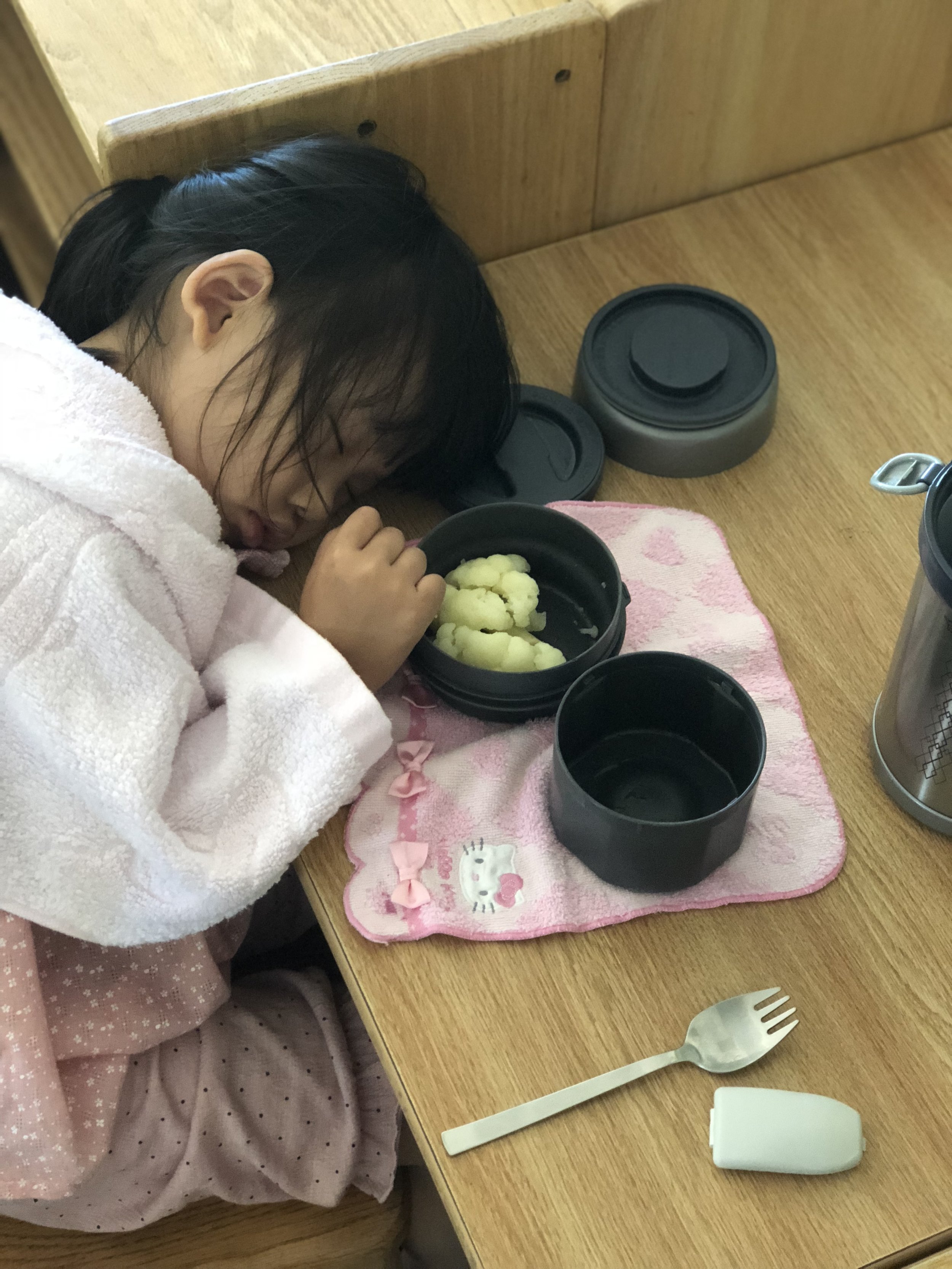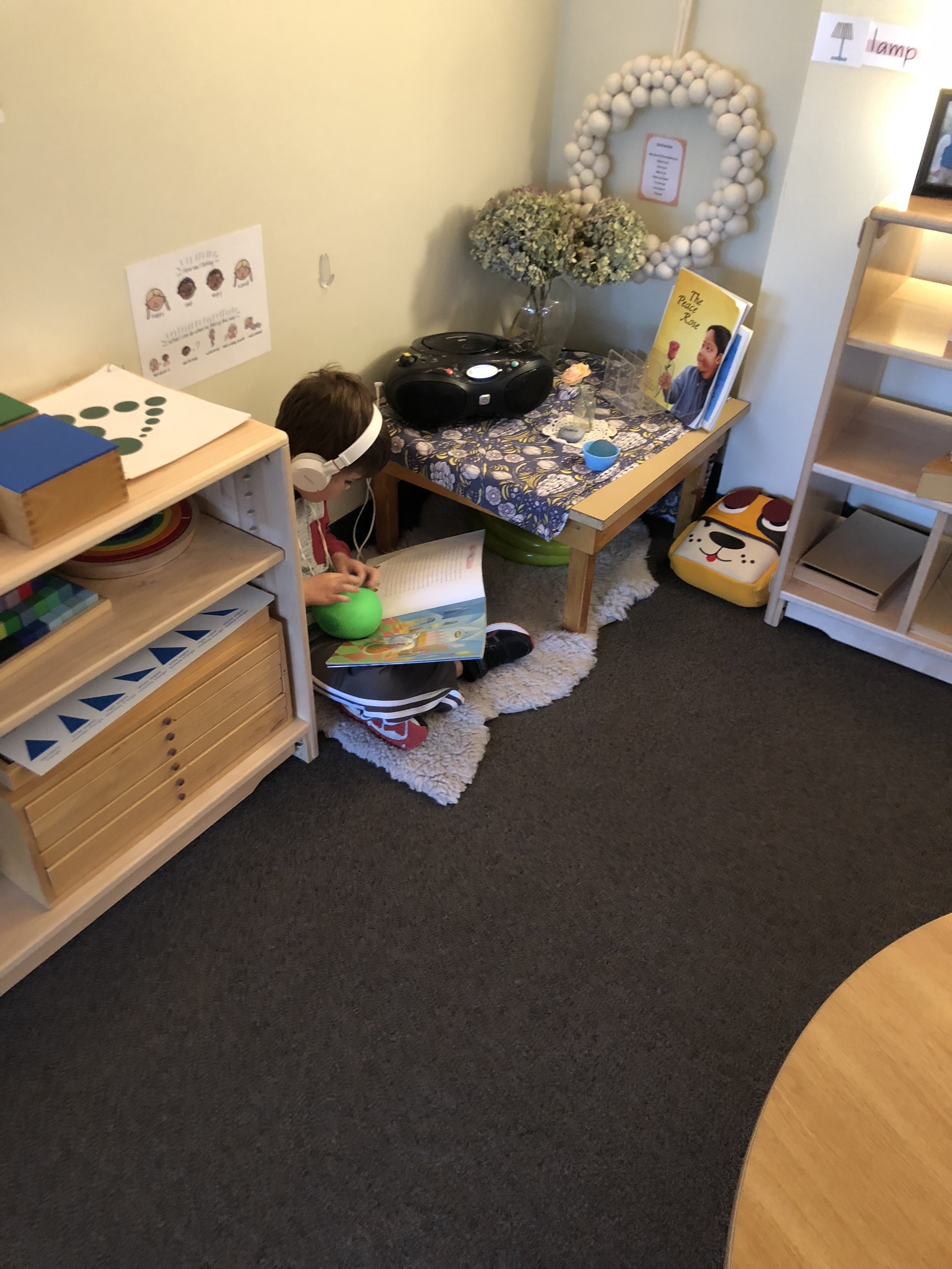Sleep and a Successful Child
Sleep. Not something that comes up super often when talking academics with your child’s teacher! But, sleep, especially during the ages your child is in Children’s House - effects more than you think. This post can go in so many directions: co-sleeping, sleep training, naps, bedtimes, wake ups, routines, routines, routines. Please remember that this is slightly skewed in the direction of a Montessori teacher who is with your child each day but NOT at home with them! But, I will say, before I became a teacher, I was a babysitter, a nanny, a night nurse, a sleep trainer (at night and naptime), so, not for nothin’, but I have a little bit of knowledge on this topic!
A child needs to have a routine. A child who pushes against routines is a child who needs firmer boundaries and smaller fences. This can be applied to SO many areas, but particularly sleep. A routine doesn’t need to start an hour before tuck in. You do NOT need to tie reading books in bed to a nighttime ritual. Reading to your child can and should be done at all times of day, not to be used as a tool for your child to stay up later. Whatever the routine you establish - make one that works for you and your family, whether it be an hour, or 10 minutes, consistency is key. My favorite routine is bath time, brush your teeth, sing a song and say goodnight. Short and sweet and no negotiating.
If your child wakes up before the sun comes up, we automatically think: I’ll put them to bed later! They’ll sleep later. If that has EVER worked for you, please email me. Studies actually show that this almost never is the case, and in fact, the opposite is true. If your child is waking up at 5 am, scoot their bedtime 30 minutes to an hour earlier. It allows their system to relax more, get into that deep sleep and fit in a full night of rest.
In the Montessori classroom, we supply a child with everything they need to be autonomous and independent. This can carry over in a home environment. There are alarm clocks that glow green when it is an acceptable time to get out of bed. You can establish that the rule in your home is they cannot get out of bed/or leave their room until a parent comes for them, BUT, they can look at books or play with quiet toys if they wake up early. If rules and routines are made clear and are consistent, children most often abide by them.
Nap time is so important. Children should be napping until the age of 4/4.5 (approximately). They need that midday reset to keep going and regain their energy. Skipping naps most often ends in disaster! When your child shows signs of growing out of their nap you can still keep that quiet time by offering a special bin of books just for rest time (so these books remain special). You can try setting a timer for 30-45 minutes, or let your child know you will come get them from their room when rest time is over. Time for your child to be away from you and time away from your child is healthy.
Typically, children who are in their first year of Children’s House must take a nap (ideally in a specific nap room). They make their beds, listen to calming music and soothe themselves to sleep. When your child is in their second or third year of Children’s House, they may have a quiet “Rest and Read” time in the classroom. They look at books, and some still fall asleep!
Sometimes, we want to be “fun”, we want to “break the rules” and stay up late, or let a child sleep in our bed, or read one more book, watch one more show, etc. etc. As adults, we are all so reflective on our sleep, we’re tired, we had to wake up too early, we had too much to do for the hours in a day - remember - those things apply to children too! Children are not endless bundles of energy that we have to “run until tired.” They are little adults, they need rest and relaxation to fuel their days, they need to know what it feels like to be at peace, be quiet, so that they can access that feeling and mentality when needed. Some children/people have different inner clocks than others, they may be a natural night owl or a natural morning riser, but, as Montessori parents, we can give them the tools and strategies they need to find peace within themselves.
Take Aways: What Can I Do At Home?
*Make a visual schedule and implement a no-negotiation bedtime routine.
*Stick to that!
*Implement a quiet time (after lunch is usually a good time) where you and your child can be alone, separately.
*Use timers, child-friendly alarm clocks, a special book of bins (which you rotate), or books on cd to facilitate quiet time.
*Weighted blankets can work miracles.


